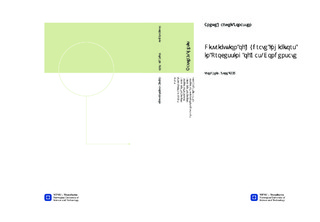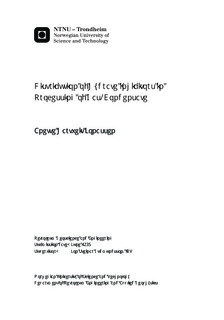| dc.contributor.advisor | Gudmundsson, Jon Steinar | nb_NO |
| dc.contributor.author | Jonassen, Anette Hartveit | nb_NO |
| dc.date.accessioned | 2014-12-19T12:17:30Z | |
| dc.date.available | 2014-12-19T12:17:30Z | |
| dc.date.created | 2013-09-16 | nb_NO |
| dc.date.issued | 2013 | nb_NO |
| dc.identifier | 648724 | nb_NO |
| dc.identifier | ntnudaim:8759 | nb_NO |
| dc.identifier.uri | http://hdl.handle.net/11250/240132 | |
| dc.description.abstract | The formation of gas hydrates have been known to cause serious problems with blockages in natural gas pipelines, wellbore and natural gas processing units. The offshore sector of the North Sea comes into focus owing to factors such as low temperature, high pressure because of deep water fields, great depth of the subsea environment and remote locations that are factors underlying the increased hydrate formation. Hydrates are formed in multiphase transport comprising gas, condensate and water. Produced water must be cleaned if it is to be re-injected into the formation, or discharged into the sea or other water bodies, hence due to potential recycling of the inhibitor. One of the main purposes of water treatment is to distinguish the previously injected thermodynamic hydrate inhibitor in Gas-Condensate production.The aim of the thesis is to conduct a simulation study to determine the distribution of various thermodynamic hydrate inhibitors and H2O, in water treatment, using a Distillation Column. The distribution of thermodynamic hydrate inhibitors between the three phases, Vapour, Liquid and Aqueous Phase was also studied. The software used to complete this task was Aspen Tech HYSYS. The data used are respectively from the Shell operated gas field Ormen Lange at the Norwegian Continental Shelf and the corresponding land-based processing facility; Nyhamna. Three cases have been studied in this thesis; the use of Methanol, Ethanol and Mono-Ethylene Glycol as hydrate inhibitor. The results show that the use of Distillation Column alone in HYSYS is not suitable for the process of separate water and Methanol due to the dispersed distribution in the column. Distillation process gives a perfect distribution of Ethanol with 100% lean Ethanol leaving the Distillation Column as vapour, but indicates only a small amount of Ethanol left after transportation. The results refer to a perfect distribution of Mono-Ethylene Glycol leading to a simplified process for recycling. The bottom product stream contains pure quantity of Mono-Ethylene Glycol and the process is optimal for the use of Mono-Ethylene Glycol as a thermodynamic hydrate inhibitor. | nb_NO |
| dc.language | eng | nb_NO |
| dc.publisher | Institutt for petroleumsteknologi og anvendt geofysikk | nb_NO |
| dc.title | Distribution of Hydrate Inhibitors in Processing of Gas-Condensate | nb_NO |
| dc.type | Master thesis | nb_NO |
| dc.source.pagenumber | 112 | nb_NO |
| dc.contributor.department | Norges teknisk-naturvitenskapelige universitet, Fakultet for ingeniørvitenskap og teknologi, Institutt for petroleumsteknologi og anvendt geofysikk | nb_NO |

